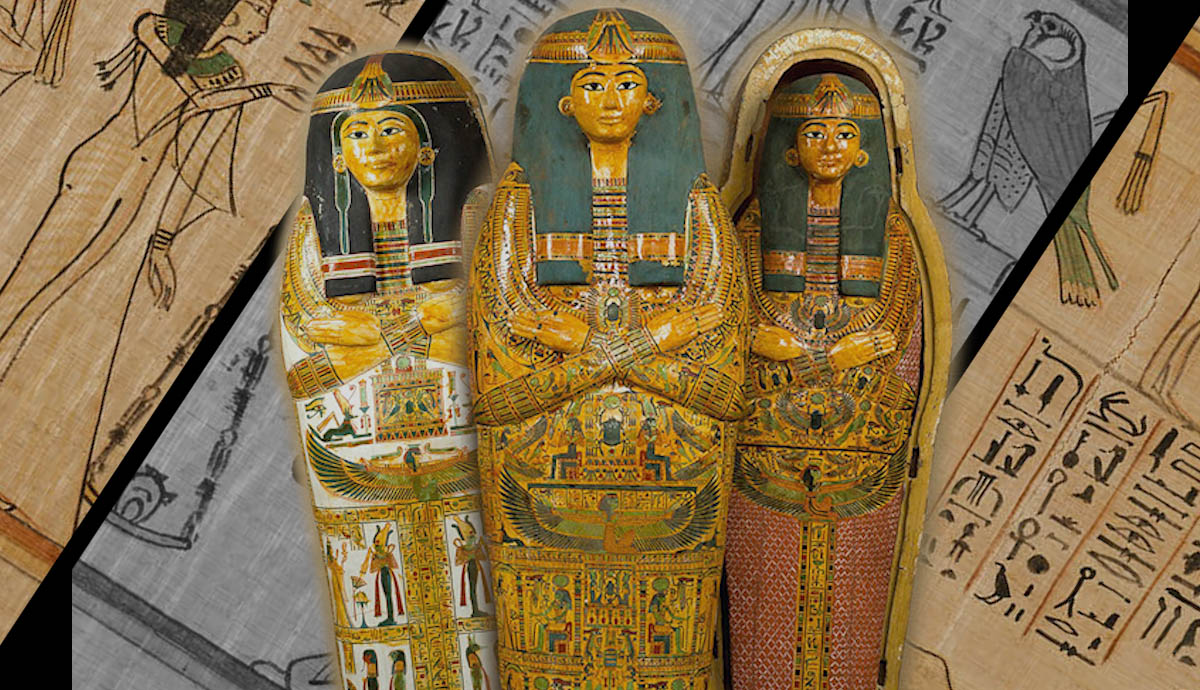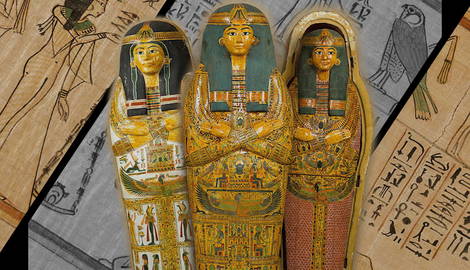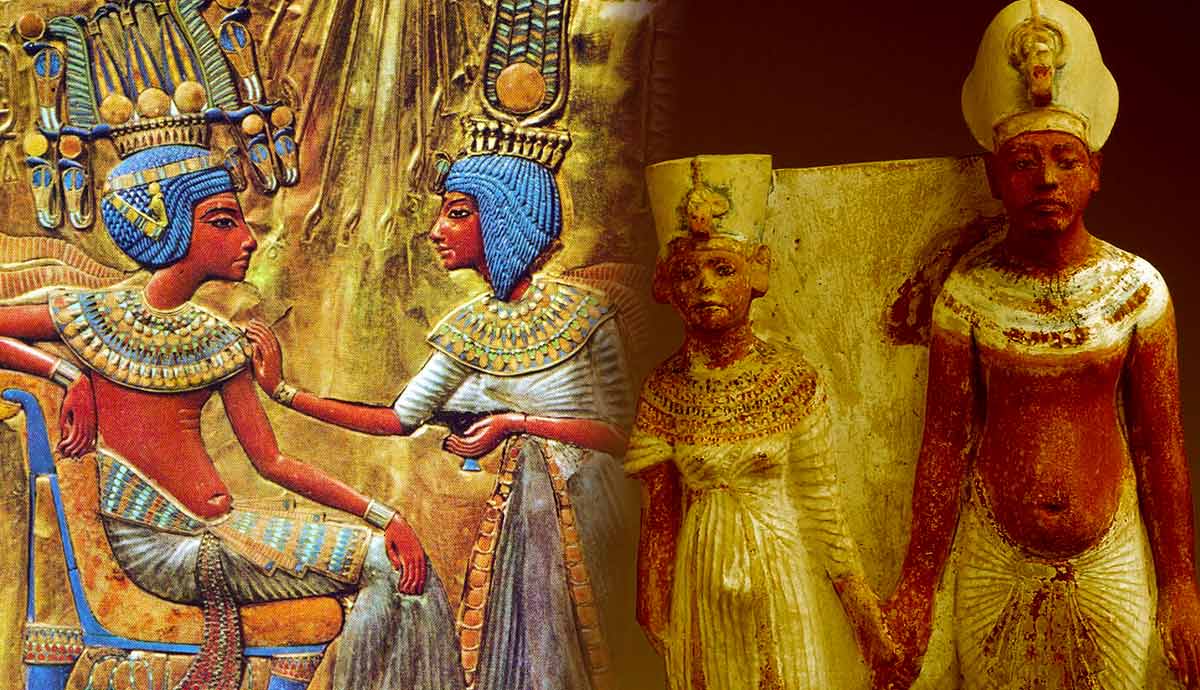
The Third Intermediate Period of Egypt is the name used by Egyptologists to refer to the era following the New Kingdom of Egypt. It formally began with Ramesses XI’s death in 1070 BC and ended with ushering in the so-called “Late Period.” It is considered to be the “darkest age” as far as the intermediate periods go, probably because there was no glorious period that followed it. There existed much internal rivalry, divisiveness, and political uncertainty between Tanis in the Delta region and Thebes located in Upper Egypt. However, although the Third Intermediate Period lacked the traditional unity and similitude of earlier periods, it still maintained a strong sense of culture that should not be undervalued.

The 20th dynasty ended with the death of Ramesses XI in 1070 BC. At the tail end of this dynasty, the influence of New Kingdom pharaohs was relatively weak. In fact, when Ramesses XI initially came to the throne, he controlled only the immediate land surrounding Pi-Ramesses, the capital of New Kingdom Egypt founded by Ramesses II “the Great” (located approximately 30 km from Tanis in the north).
The city of Thebes was all but lost to the powerful priesthood of Amun. After Ramesses XI died, Smendes I buried the king with full funerary rites. This act was performed by the king’s successor, who in many cases was the king’s eldest son. They would perform these rites as a way to indicate that they were divinely chosen to next rule Egypt. After his predecessor’s interment, Smendes took over the throne and continued to rule from the Tanis area. Thus began the era known as Egypt’s Third Intermediate Period.
Dynasty 21 Of The Third Intermediate Period

Smendes ruled from Tanis, but that is where his reign was contained. The High Priests of Amun had only gained more power during Ramesses XI’s reign and completely controlled Upper Egypt and much of the country’s middle region by this time. However, these two power bases were not always competing against each other. The priests and the kings were often actually from the same family, so the division was less polarizing than it seems.
22nd And 23rd Dynasties

The 22nd dynasty was founded by Sheshonq I of the Libyan Meshwesh tribe west of Egypt. Unlike the Nubians with whom the ancient Egyptians knew about and came into contact throughout much of the state’s history, the Libyans were a bit more mysterious. The Meshwesh were nomadic; the ancient Egyptians left that way of life in the predynastic era and by the Third Intermediate Period had become so used to sedentism that they did not quite know how to deal with these wandering foreigners. In some ways, this may have made the Meshwesh people’s settlement into Egypt simpler. Archaeological evidence suggests that the Meshwesh had established themselves in Egypt sometime in the 20th dynasty.
The famous historian Manetho states that the rulers of this dynasty were from Bubastis. Still, evidence supports the theory that the Libyans had almost certainly come from Tanis, their capital and the city where their tombs were excavated. Despite their Libyan origin, these kings ruled with a style very similar to their Egyptian predecessors.

Starting in the last third of the 9th century BC of Dynasty 22, kingship began to weaken. By the end of the 8th century, Egypt had fragmented further, especially in the north, where a few local rulers seized power (eastern and western Delta regions, Sais, Hermopolis, and Herakleopolis). These different groups of independent local leaders became known as the 23rd dynasty by Egyptologists. Preoccupied with the internal rivalries that had taken place in the latter part of the 22nd dynasty, Egypt’s grip on Nubia to the south gradually slipped. In the mid-8th century, an independent native dynasty arose and began to rule Kush, even extending into Lower Egypt.
The 24th Dynasty

The 24th dynasty of the Third Intermediate Period comprised an ephemeral group of kings who ruled from Sais in the western Delta. These kings were also of Libyan origin and had broken off from the 22nd dynasty. Tefnakht, a powerful Libyan prince, expelled Osorkon IV, the last king of the 22nd dynasty, from Memphis and proclaimed himself king. Unbeknownst to him, the Nubians had also noticed Egypt’s fractured state and Tefnakht’s actions and decided to take action. Led by king Piye, the Kushites led a campaign to the Delta region in 725 BC and seized control of Memphis. Most of the local rulers pledged their allegiance to Piye. This prevented the Saite dynasty from establishing a firm grasp on the Egyptian throne and eventually allowed the Nubians to seize control and rule Egypt as its 25th dynasty. Thus, the Saite kings only ruled locally during this era.
Not long after, a son of Tefnakht by the name of Bakenranef took up his father’s post and was able to reconquer Memphis and crown himself king, but his rule was cut short. After only six years on the throne, one of the Kushite kings from the concurrent 25th dynasty led an attack on Sais, seized Bakenranef, and was thought to have burned him at the stake, effectively ending the 24th dynasty’s plans to gain enough political and military traction to stand against Nubia.
Dynasty 25: Age Of The Kushites

The 25th dynasty is the last dynasty of the Third Intermediate Period. It was ruled by a line of kings who came from Kush (modern-day northern Sudan), the first of which was king Piye.
Their capital was established at Napata, located at the fourth cataract of the Nile River by the modern city of Karima, Sudan. Napata was Egypt’s southernmost settlement during the New Kingdom.
The 25th dynasty’s successful reunification of the Egyptian state created the largest empire since the New Kingdom. They assimilated into society by adopting Egyptian religious, architectural, and artistic traditions while also incorporating some unique aspects of Kushite culture. However, during this time, the Nubians had gained enough power and traction to draw the attention of the Neo-Assyrian empire to the east, even becoming one of their main rivals. The Kingdom of Kush attempted to gain a foothold in the Near East through a series of campaigns, but the Assyrian kings Sargon II and Sennacherib were able to fend them off effectively. Their successors Esarhaddon and Ashurbanipal invaded, conquered, and expelled the Nubians in 671 BC. The Nubian king Taharqa was pushed south and the Assyrians placed a series of local Delta rulers allied with the Assyrians in power, including Necho I of Sais. For the next eight years, Egypt formed the battleground between Nubia and Assyria. Eventually, the Assyrians successfully sacked Thebes in 663 BC, effectively ending Nubian control of the state.

Eventually, the 25th dynasty was followed by the 26th, the first of the Late Period , which was initially a puppet dynasty of Nubian kings controlled by the Assyrians before the Achaemenid (Persian) Empire invaded them. Tanutamun, the last Nubian king of the 25th dynasty, retreated to Napata. He and his successors continued to rule Kush known later as the Meroitic dynasty that flourished from roughly the 4th century BC until the 4th century AD.
Art and Culture In The Third Intermediate Period

The Third Intermediate Period is generally perceived and discussed in a negative light. As you now know, much of the era was defined by political instability and war. However, this isn’t the full picture. Local native and foreign rulers alike drew inspiration from old Egyptian artistic, architectural, and religious practices and melded them with their own regional styles. There was renewed construction of pyramids that hadn’t been seen since the Middle Kingdom, as well as new temple building and a revival of artistic styles that would last well into the Late Period.
Burial practices, of course, were maintained throughout the Third Intermediate Period. However, certain dynasties (22 and 25) produced famously elaborate funeral art, equipment, and ritual services for the upper class and royal tombs. Art was extremely detailed and employed different mediums such as Egyptian faience, bronze, gold, and silver to create these works. Whereas extravagant tomb decoration was a focal point in the Old and Middle Kingdoms, burial practices shifted towards more richly decorated coffins, personal papyri, and stelae during this period. In the 8th century BC, it was popular to look far back in time and mimic Old Kingdom monument and iconographic styles. In imagery depicting figures, this looked like broad shoulders, narrow waists, and emphasized leg musculature. These preferences were performed consistently, paving the way for a large collection of high-quality works.

Religious practices became more focused on the king as a son of the divine. In previous periods in ancient Egypt, the king was usually praised as an earthly god himself; this change probably had something to do with the instability and waning influence of this position by the end of the New Kingdom and into the Third Intermediate Period. Along the same line, royal imagery began to appear ubiquitously once more, but in a different way than kings from previous dynasties had commissioned. During this period, kings were often mythologically depicted as the divine infant, Horus and/or the rising sun most commonly represented by the child squatting upon a lotus flower.
Several of these works also depicted or referred to Horus in relation to his mother, Isis, goddess of magic and healing, and sometimes also his father, Osiris, lord of the underworld. These new kinds of works reflected the growing popularity of the divine Cult of Isis and the famous Triad of Osiris, Isis, and the child Horus. Children were often depicted with a sidelock, otherwise known as a Horus lock, which symbolized that the wearer was a legitimate heir of Osiris. So, by portraying themselves as Horus the child, kings declared their divine right to the throne. Clearly, this evidence shows us that the Third Intermediate Period was much more than a fractured era of disunity brought on by weak central rulership and ruthless foreign usurpation.










